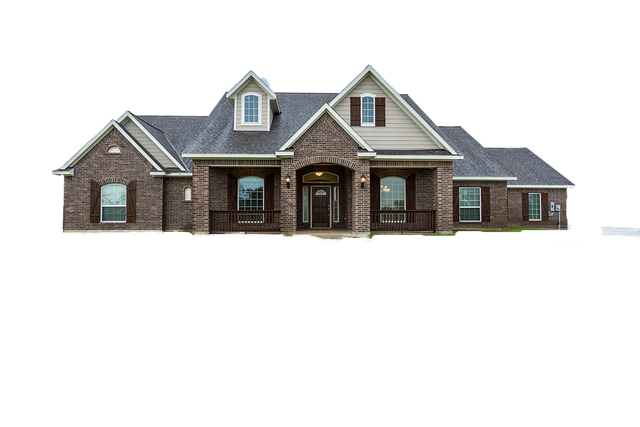Assessing material costs is critical for successful home renovation budget planning. Researching remodeling expenses using online tools and apps helps find competitive prices. Understanding typical material costs ranges from $5K-$15K for smaller projects to over $50K for extensive upgrades. Utilizing renovation pricing guides, cost estimators, and strategic sourcing can manage expenses and ensure realistic budgeting.
Understanding material and labor costs is crucial for a successful home renovation. This comprehensive guide breaks down the intricate web of expenses in renovations, empowering you to make informed decisions. From assessing material costs—including market trends, quality, and quantity—to navigating labor expenses across various roles, we offer practical tips for sourcing affordable materials and negotiating rates. Additionally, learn effective budget planning strategies, including contingencies and online tools, and discover cost-saving tips for maximizing affordability in your home upgrade journey.
Assessing Material Costs: A Comprehensive Guide
Assessing Material Costs is a crucial step in any home renovation project. It involves meticulously evaluating every component that goes into your project, from the obvious—like flooring and appliances—to the subtle, such as paint and hardware. To create an accurate renovation budget planning, start by compiling a detailed list of materials needed, ensuring you account for both standard and specialty items. Researching remodeling expenses across various retailers and suppliers is essential to finding competitive prices that fit your affordable home renovation goals.
Using a renovation pricing guide can be immensely helpful in estimating these material costs. Online tools and apps offer user-friendly interfaces where you input project details, receiving an immediate breakdown of potential home upgrade expenses. These resources often include cost estimators that factor in national averages and recent market trends, ensuring your budget is realistic and aligns with current remodeling costs. Remember, a comprehensive renovation cost estimator will not only save time but also help you make informed decisions throughout the planning process.
– Understanding typical material expenses in home renovations
Understanding typical material expenses is a crucial step in renovation budget planning. Home renovation costs can vary widely depending on factors such as the scope of work, location, and quality of materials chosen. A comprehensive renovation pricing guide suggests that smaller projects like painting or replacing fixtures might range from $5,000 to $15,000, while more extensive upgrades like kitchen or bathroom remodeling can cost between $20,000 to $50,000 or even more. It’s essential to consider both the cost of home improvements and the potential return on investment when planning a renovation project.
To effectively manage material expenses, homeowners should research current market rates for materials and compare prices from different suppliers. Utilizing affordable home renovation strategies, such as focusing on value-added upgrades and choosing versatile design elements, can help keep costs in check without compromising quality or aesthetics. Additionally, using online tools like renovation cost estimators can provide a rough estimate of remodeling expenses based on project specifics, offering valuable guidance for setting realistic budgets.
– Factors influencing material costs: market trends, quality, and quantity
Understanding material costs is a crucial aspect of home renovation budget planning. Several factors significantly influence these expenses, including market trends, product quality, and the quantity required for the project. Staying informed about industry fluctuations can help homeowners make strategic decisions to stay within their renovation budgets. For instance, keeping an eye on seasonal discounts or price changes in raw materials can save costs.
When it comes to quality, choosing between premium and budget-friendly options directly impacts the final price tag. High-end materials often carry a higher cost due to enhanced durability, aesthetics, or specialized features. On the other hand, affordable alternatives might require more frequent replacements over time. Additionally, the quantity of materials needed depends on the project’s scale and specifications. Accurately estimating material requirements through detailed planning is essential for creating a realistic renovation budget. Utilizing online renovation pricing guides and cost estimators can also aid in budgeting for both materials and labor, ensuring a successful home upgrade experience.
– Tips for sourcing affordable materials without compromising quality
When planning a home renovation, one of the key aspects to master is navigating the material and labor costs involved. To keep your project affordable without sacrificing quality, start by doing thorough research and comparing prices from various suppliers. Online platforms offering renovation pricing guides can be a great resource for understanding typical cost breakdowns for different types of projects. Utilizing these tools allows you to set realistic expectations and identify potential areas where you might save money.
Additionally, consider exploring alternative or recycled materials that are environmentally friendly and often more economical. This strategy not only contributes to sustainability but also helps manage your renovation budget effectively. Don’t be afraid to ask around for recommendations from trusted contractors or fellow homeowners who have recently undertaken similar projects; they may have valuable insights into where to source affordable materials without compromising on quality.
Understanding material and labor costs is a cornerstone for successful home renovation projects. By grasping the factors influencing material prices, sourcing strategies, and utilizing reliable cost estimators, homeowners can effectively plan their renovation budgets. Armed with this knowledge, folks can navigate the process confidently, ensuring both quality upgrades and financial stewardship. Remember that thoughtful budgeting and informed decisions are key to transforming spaces into dream homes without breaking the bank.
